
The federal state of Upper Austria got its name from its geographical location – it is located in the upper reaches of the Austrian part of the Danube. On an area of 12 thousand square meters. kilometers, about one and a half million people live. The federal land border runs along the Enns River in the east and the Inn River in the west. Upper Austria borders the Czech Republic in the north, Styria and the Land of Salzburg in the south , and Germany in the west.
Upper Austria is the second industrial province of Austria after Vienna . Once it was part of the Roman province of Noricum , and since then it has remained the richest region of the country. During the reign of the Babenbergs , it and neighboring Lower Austria became the cradle of the future great Empire.
Historically, the province is divided into five districts. Mühlfirtel will be stretched along the Danube. Its largest city is Freistadt . In the west, Innfirtel lies at the foot of the Alps. The main cities of Reed and Brown . Hausruckfirtel got its name from the mountain massif Hausruck , the largest city is Fekklabruck . The fifth district is Traunfirtel , which includes the most picturesque district in all of Austria – Salzkammergut .
Linz , the capital of the province , is the third largest city in Austria .
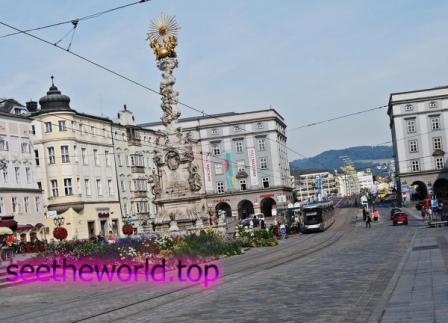
It is the most important industrial center and the largest Austrian port on the Danube. the city stands in a beautiful valley and is surrounded by hills. The old part of the city is charming. In Upper Austria, everyone will find entertainment to their liking. In Linz there is the oldest church in Austria and at the same time the most modern Polytechnic Museum . On the banks of the Danube and Inn rise the majestic monasteries of Kremsmünster , Steyr and St. Floriana . The caves of the Dachstein massif are natural monuments.
The main attraction of Upper Austria is the mountain lakes in the stunning Salzkammagute. The moderate climate and modern sanatoriums attract vacationers from all over Europe. And in Bad Ischl there was once an imperial residence.
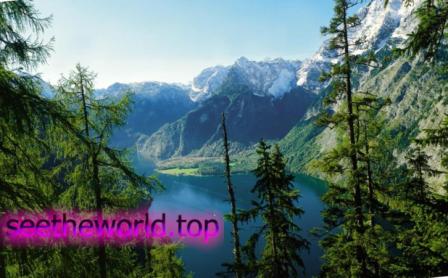
The strategically convenient geographical location of Linz , the capital of Upper Austria , influenced the decision of the ancient Romans to establish a large settlement here called Lentia . The crossing of waterways in Linz gave the city power and wealth. Salt and iron ore were transported along the rivers Traun and Ens , and finished products were transported down the Danube to Vienna and Passau . Linz became the capital of Upper Austria in the 15th century. It is not only an industrial city, but also a cultural center with many galleries, museums, architectural monuments and the futuristic center “Ars Electronics”.
The beginning of the composer Anton Bruckner ‘s career is connected with Linz . The city is spread over both banks of the Danube. The historical center is located on the right, southern bank at the bend of the river. One of the most beautiful architectural complexes in Austria is the main square of Linz . The Gothic town hall, built around 1513, is located on the square. And, of course, in the center of the square, as in all the central squares of Austrian large and small cities, there is a baroque column – a religious monument as a sign of gratitude for salvation from three deadly dangers: war, fire and plague.
The oldest church in Austria is preserved in Linz – Martinskirche or St. Martin’s Church . The first mentions of it date back to the 8th century AD. During the time of Charlemagne, it was part of the residence of the Carolingians .
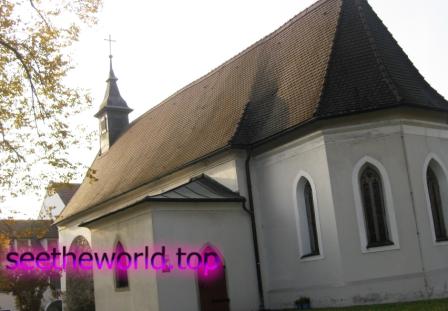
Such attractions as Linz Castle , which now houses the Museum of Applied Arts of Upper Austria , and the Landhaus , the palace of the Government of the Federal Land, built in the Renaissance style on the site of the former Minorite monastery, deserve attention. In the courtyard of the Landhaus guests can see the amazing fountain of the planets , installed in honor of the outstanding astronomer and mathematician of the Renaissance Johannes Kepler , who lived and worked in Linz for 14 years (1612-1626) . The seven figures on the bronze pedestal depict the seven planets known at that time. Nearby is the church of the Minorites, built in the early Gothic period, however, under the influence of the fashion of the 18th century, it was rebuilt in the Baroque style.
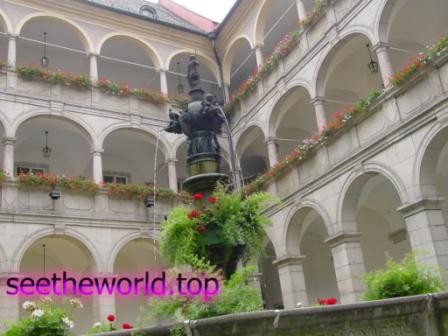
The baroque monastery of St. Florian , located approximately 5 kilometers from Linz , deserves special attention of guests of Upper Austria . In the 11th century, a monastery and a church were built on the place where Florian, the prefect of the Roman province of Noricum, who accepted the Christian faith, was buried. The modern appearance of these architectural monuments is the result of the work of two outstanding masters of the Baroque era – Jacob Prandauer and Carlo Carlone .
The complex of monastery buildings includes cells of Augustinian monks, reception rooms and a church with a chapel of the Virgin Mary . The main object of the courtyard is the Adlerbrunner – the Eagle’s Well, built in 1603. The east wing houses a library of more than 140,000 volumes, incunabula and manuscripts. The painting on the ceiling by Altomonte is an allegory of the union of Virtue and Knowledge. Next to the library is a marble hall with huge columns designed by Jakob Prandauer , the greatest architect of the Austrian Baroque, who specialized in cult architecture. The monastery church was rebuilt by Carlo Carlone. Inside the church, you should see the stained-glass windows, the pulpit and the main altar with a painting of the Assumption of the Virgin Mary and columns made of pink Salzburg marble. There is also a picture gallery in the monastery.
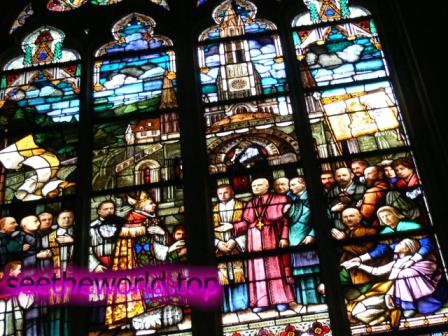
Upper Austria is home to the most picturesque region of Austria – Salzkammergut , which is worth visiting at any time of the year.
Salzkammergut is a picturesque mountain and lake region located in three Austrian federal states: Upper Austria , Salzburg and Styria .
This beauty is located east of the city of Salzburg and is one of the most popular resorts in Austria . Every year, hundreds of thousands of tourists, hungry for spectacles, breathtaking natural beauty, come here to enjoy the beautiful lakes in the summer and ski the mountains in the winter.
Salzkammergut has 76 picturesque lakes with the clearest water. Add to this quite high mountains, from which the Dachstein mountain massif stands out . It is located in the southern part of the Salzkammergut and the mountain Hoe-Dachstein (2995 m) is its crown.
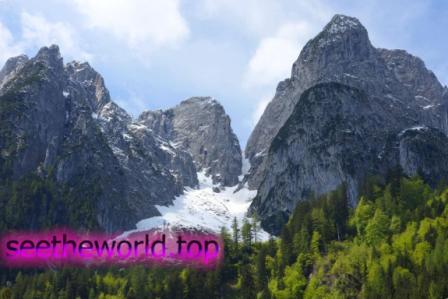
Anyone who has read about the Dachstein caves knows that they exist here. Let’s just add that the status of the longest of them belongs to the Khirlats cave , the length of which is 96 km. Salzkammergut translates as a region rich in salt. Therefore, the history of the first human settlements here goes back to the deep past.
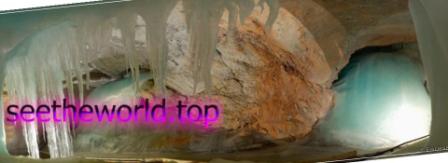
At this stage, there is confirmation that the first settlements date back to the 4th millennium BC. And already at the beginning of the 2nd millennium BC. Salzkammergut became the center of salt production in this region. Currently, the territory of the region is very rich in numerous deep salt mines. Moreover, in many of them, the extraction of this vital product is carried out even in our time.
Tourism in Upper Austria
Upper Austria is one of the popular destinations for trips to the federal states of Austria . Here are located the ancient cities of Linz , Braunau-on-Inni and Hallstatt , the famous Salzkammergut mountain massif belonging to the Eastern Alps with high-altitude glaciers and the mountainous country of Dachstein . On the other side, Upper Austria is bordered by the Czech mountain massif. The famous Danube and the Traun , Krems , Enns and Steyr rivers flow through the territory of Upper Austria. It becomes clear why most tourists who visit this beautiful area prefer active recreation.
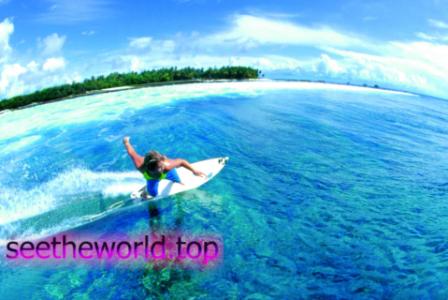
Ski resorts, hiking, horse riding, recreation on mountain lakes, trips along the Danube, the famous resorts of St. Wolfgang im Salzkammergut , Hallerbach and Hallstatt , the famous Kalkalpen National Park, the Sauwald region and excellent opportunities for ecological tourism attract travelers.
Ecological tourism in Upper Austria
Almost half of all Austrian agricultural enterprises are located in Upper Austria , many of them adhere to the principles of organic agriculture, horticulture and animal husbandry, it is here that many suppliers of famous Austrian gastronomic restaurants are located . It is no coincidence that most of the guests of Upper Austria prefer to stay on farms and in cozy guesthouses located in the midst of idyllic landscapes.
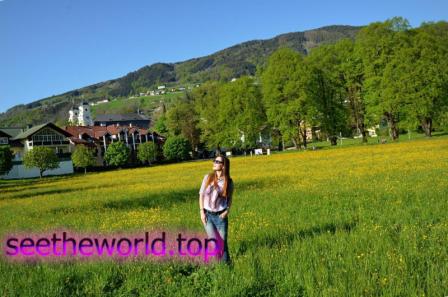
Entertainment and active recreation
The land of Upper Austria , spread out in the very north of the country and divided into two parts by the Danube, is famous for its amazing natural landscapes and a variety of opportunities for active recreation and exciting excursions.
In winter, the snow-covered slopes of the Alps with the highest peak, the UNESCO-listed Dachstein , attract skiers and snowboarders, and in summer – climbers, cyclists and hikers. The most popular resort region is the Salzkammergut lake region . About 50 lakes of the resort impress with the magical beauty of landscapes and crystal clear water. Here you can not only swim, but also go boating, fishing, water sports, and, of course, get to know the charming old towns of the region, such as the UNESCO World Heritage Site – Hallstatt, known for the oldest salt mines in Europe. Nearby is another unique attraction – one of the world’s largest cave systems, Dachstein. The Salzkammergut is also home to the Kalkalpen National Park with a huge variety of flora and fauna.
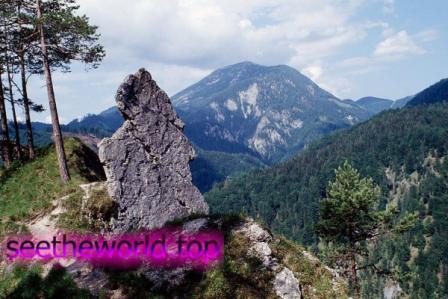
The land of Upper Austria is also interesting for its numerous castles, palaces and monasteries. This is the 8th century Gothic castle in Wales, where Emperor Maximilian I died , and Hohenbrunn Castle with a hunting museum, a Renaissance castle in Grein with a shipping museum, the Linz City Palace and the ancient palaces of Orth and Lahnschloss , located on the shore of the lake in Gmunden , as well as the oldest in the upper Austrian Benedictine monastery Maninzeo and the beautiful baroque monastery of St. Florian – one of the largest in Austria.
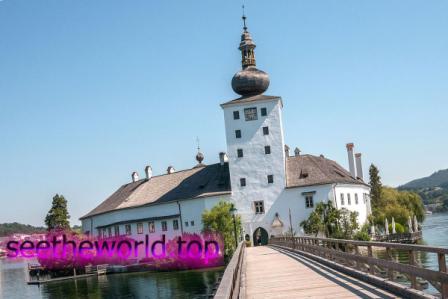
The land of Upper Austria is an excellent choice for a vacation with the whole family. In the mysterious salt mines of Hallstatt , you can go down a dizzying underground slide, in St. Wolfgang you can ride a steam train to the Schaffberg mountain , take a walk on a children’s steamboat on the lake and visit the doll museum, in Grünau im Almtal you can go to the world of children’s fairy tales in Schindlbach park , in Linz – to the grotto of fairy tales, in Natterbach – to Austria ‘s largest playground “Wild West” , and in Wales – to the zoo, bird sanctuary and toy museum.

The cultural life of Upper Austria is rich all year round – from the international Bruckner festival in autumn in Linz and the summer operetta festival in Bad Halle to concerts and open-air theater performances held from May to September in Mondsee .
Upper Austrian cuisine
It is the cuisine of Upper Austria that includes such traditionally Austrian treats as smoked meat with cabbage and all kinds of dumplings. By the way, the Lower Austrian culinary kaleidoscope revolves around round dumplings. It is not for nothing that an old Upper Austrian proverb says: “He who has not eaten dumplings will be hungry all day.”

True, there are many other delicacies here, and they do not necessarily seem “difficult” to you, for example, bagels from Linz , or cake from Linz ( Linz cake ), or ” eyes ” from Linz. And these are only the sweet delicacies of the capital of Upper Austria . You can also make a lot of gastronomic discoveries in other cities. These include, for example, Steier schnitzels with pumpkin seeds (made from chicken, turkey, veal or pork), Welsh lamb or vegetables from Efferding (famous for their freshness and particularly delicate taste).

But first of all, let’s say a few words about smoked meat, which in Bavaria and Upper Austria is called ” gezelchtes “. This meat can be cold or hot smoked and mean pork or beef. Local residents eat it as ham or boil it, and then it becomes a component of cold or hot dishes.

As a rule, smoked pork is served to the table together with mashed potatoes, which are prepared with milk, garlic and nutmeg and then sprinkled with pork cracklings on top. There are other options: smoked meat with cracklings and parsley or green onions and smoked meat, first fried and then poured with sour cream sauce.
Upper Austria. Salzkammergut is a region of lakes and a heavenly place for recreation
The Salzkammergut resort region is located on the territory of three Austrian districts: Upper Austria , Styria and Salzburg , in the very center of the country. Crystal clear lakes surrounded by majestic mountains – these photos are typical of the resort.

But tourists who came to rest in Salzkammergut see much more. Here you can enjoy unique natural landscapes, visit architectural monuments, visit healing springs, wander through fairy-tale towns with ancient history, all year round. Mild climate, healing mountain air, hospitality and friendliness of local residents, high level of service – all this is the Salzkammergut lake region.
Salzkammergut travel routes
There are 76 high mountain lakes in the resort. Each of them is beautiful in its own way. The water in the lakes warms up to 19-20 degrees, all kinds of water entertainment are organized:
- swimming;
- rowing;
- surfing;
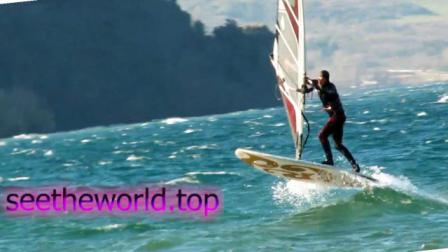
- sailing on yachts;
- fishing;
- flights on steam planes.
The largest lake, Attersee , covers an area of 54 square meters. km A huge water complex has been built on the shore of the lake, equipped with beaches and playgrounds. While swimming in this lake, you can see a depth of up to 20 m. This indicator is unique for fresh water bodies.
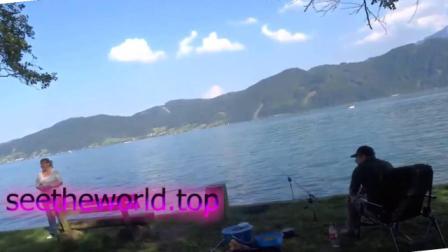
Lovers of freshwater diving buy tickets to the Salzkammergut specifically to visit the Wolfgangsee lake . It is one of the warmest – in summer the water temperature reaches 24 degrees. Standard water entertainment here is complemented by the opportunity to visit the sights of the town with the same name. In Wolfgangsee there is a church from the late Gothic period. The church was repeatedly mentioned in the annals of the 16th century, and mysterious events are associated with it. To this day, the church has remained the object of numerous pilgrims’ visits. Next to the church is a fountain built in the early 16th century.
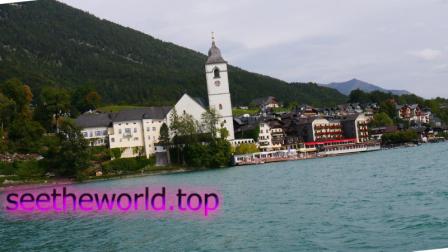
You should definitely buy a tour to Salzkammergut to relax on the Halstädter See lake . The town of Hallstatt is located on its shore , it is one of the most beautiful villages in Europe. Each house is unique in its architecture and design. It is difficult to find two identical buildings in this village.

The list of attractions of the resort can be continued endlessly. Even after spending a month on vacation in the Salzkammergut, you won’t have time to see everything.
Accommodation at the resort
Hotels, private boarding houses, sanatoriums of the Salzkammergut offer accommodation for every taste and budget. There are inexpensive family rooms and luxurious five-star apartments near the shores of the lakes. Houses are rented partially or completely. The service is impeccable, and the hospitality of local residents has become a good tradition of these places.
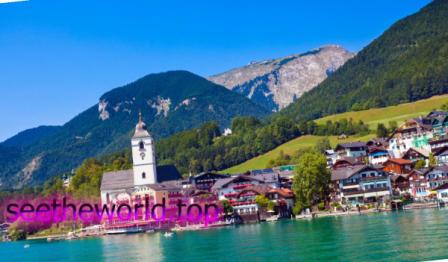
Between excursions, you can treat yourself to delicious food. Local restaurants have a huge selection of fish dishes. Asparagus under delicate sauces is a must in the summer menu. Egg white souffle is a traditional delicacy. Among the drinks, schnapps and beer are preferred, and in the summer heat it is best to quench your thirst with apple juice and mineral water. Food portions in restaurants are very large, so you need to carefully calculate your gastronomic possibilities.
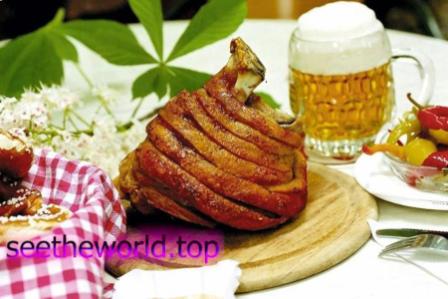
The peak of the bathing season on the lakes falls on July – August. If you want to get into the ski season, it is better to buy a tour to Salzkammergut between December and April.
Thermal springs of Upper Austria
Such traditional health resorts of Upper Austria as Ischl with its Imperial Baths, Zell and Hull have earned long-term trust all over the world . Recently, more and more new places are being forced to talk about themselves: the Heinberg wellness complex attracts with its Caribbean idyll, and in Bad Schallerbach , Austria’s first color thermal baths were recently launched.

Imperial thermal baths offer a wide range of therapeutic procedures, such as salt massages, salt inhalations, mud wraps, physiotherapy, hydromassages, various types of gymnastics – all this in a pleasant relaxing atmosphere. The indoor pool, where the salt water temperature is maintained at 32 ° C, is equipped with special seats in the water. There is a jacuzzi area where you can have a bubble massage. The second swimming pool under the roof is considered the warmest in Ishli – the water temperature here is 34 ° C. This reservoir has a variety of underwater jets, whirlpools, a zone with the effect of sizzling mineral water.
Wonderful views of the surrounding mountains can be seen from two outdoor pools with a water temperature of 33 ° C. They also have a so-called “lazy river” that allows you to relax in the constantly moving stream of water.
Resorts of Upper Austria. Bad Hull
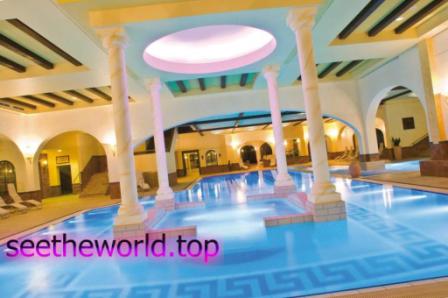
This is a specialized mineral resort located in Upper Austria . The peculiarity of its sources is the high content of iodine in the water, which determined the direction of its therapeutic activity. Here they effectively fight angina, atherosclerosis, post-stroke conditions and hypertension. In addition, local waters have a beneficial effect on patients with thrombophlebitis and varicose veins. Only here people treat various eye diseases and various hormonal disorders.
The resort of St. Wolfgang in Upper Austria
St. Wolfgang is an ancient Austrian town named after a Catholic saint who built a small chapel here more than a thousand years ago. Over time, this chapel has grown into a luxurious cathedral, pleasing the eyes of local residents and guests of the resort.
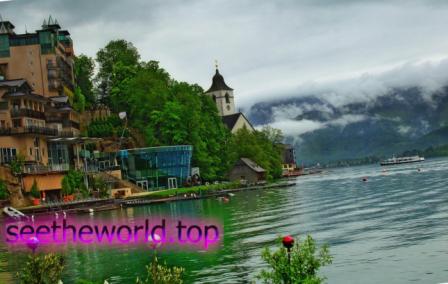
Nowadays, the resort of St. Wolfgang is better known as a health resort. And this is not surprising, because there are many reasons for this, the main ones being the presence of healing springs, ideal ecology and a mild climate. And what could be more pleasant than breathing the purest alpine air? Already in the 19th century, thanks to the medicinal salts, the resort was widely known in the aristocratic circles of Europe. Many great people of this world rested and improved their health here. The greatest European dynasties preferred to have their own homes in this Austrian city.
St. Wolfgang lies on the shore of Lake Wolfgangsee . Rest at this resort is perfectly complemented by various sports, fishing and interesting excursions. In addition, there are golf courses, minigolf, tennis courts, bowling alleys and horse stables at the service of tourists.
Resorts of Upper Austria. Bad Ischl
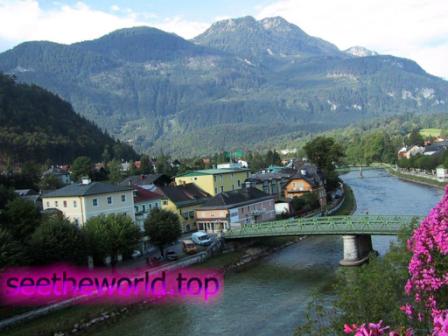
Bad Ischl is located on the banks of the Traun and Bad Ischl rivers , in the federal state of Upper Austria . This resort town is well-known on Austrian soil, primarily due to its mineral springs. Fame began to come to him in 1827, when the Habsburg couple – Archduke Karl and Archduchess Sophie , who suffered from infertility, came here for treatment. The clean mountain air and the healing properties of the springs did their job and the result of the stay of the royal couple in Bad Ischl were 4 strong and healthy babies born after some time. In 1849, the spa resort was visited by the emperor of the Austrian Empire – Franz Joseph I, who met his future wife Elizabeth here. Gradually, more and more people came to these lands to improve their health, among whom were such famous personalities as Johann Strauss, Ilmar Kalman, Romi Schneider, Nikita Khrushchev, Helmut Kohl and other famous politicians, movie stars, athletes, writers and musicians.
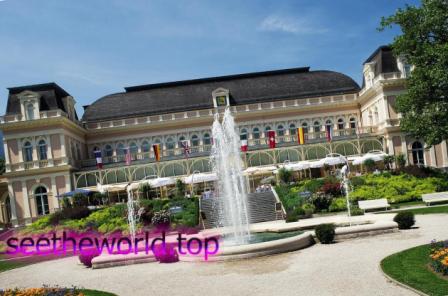
Meanwhile, Bad Ischl attracts vacationers not only with its Kaiser Therme wellness complex and effective restorative procedures, but also with historical monuments, museums, cathedrals, parks and excellent conditions for sports. In addition, the city annually hosts large mass events, including knightly tournaments and festivals of jazz and classical music. Tourist infrastructure and hotel service are developed at the highest level.
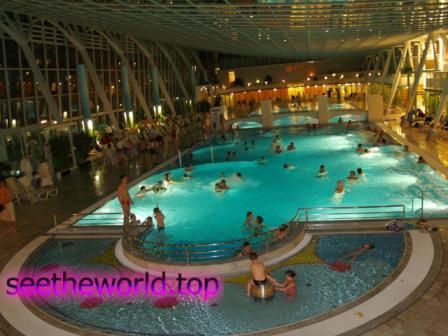
In the Middle Ages, Bad Ischl was widely known as a center of trade in salt, which was actively mined in the regions adjacent to the city. At the beginning of the 19th century, local doctors discovered that the mineral composition of the local springs is similar to sea water, but the higher mineral content contributes to a positive effect and has a strong impact on many functions of the human body. Thus, a balneological resort appeared in these places. All procedures and consultations are carried out in the Kaiser-Therme health complex, in the immediate vicinity of which numerous hotels are located. The center specializes in the provision of services and treatment of diseases of the respiratory tract, musculoskeletal system, disorders of the cardiovascular system, problems of the urinary tract and digestion. There are also specialized departments for children and people with diseases such as asthma and bronchitis on the territory of Kaiser Terme. Patients are offered such therapeutic procedures as inhalation with salt, oxygen and carbon dioxide baths, an in-depth system of breathing exercises, physiotherapy, massage, mud applications, and treatment is carried out with the help of regular internal application of mineral salts. The restorative program of the course includes intensive sports, including tennis, golf, mountain biking and horseback riding.
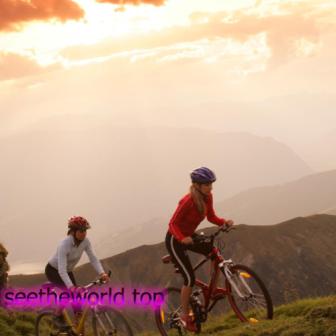
One of the main attractions of Bad Ischl is the Imperial Villa , which at one time served as the residence of Emperor Franz Joseph I and his wife Elisabeth. The couple received this villa as a gift from Franz’s mother, Archduchess Sophie , on the occasion of their engagement. The building itself is not too remarkable and does not differ in any exquisite design, but it is surrounded by tall broad-leaved trees, and in front of the central facade of the villa there is a picturesque park with green lawns, bushes and flowers. In it there is a monument to the emperor, depicted by a sculptor surrounded by his beloved dogs. Today, the Imperial Villa is owned by Archduke Mark Salvatore , but is open to the public along with the park area.
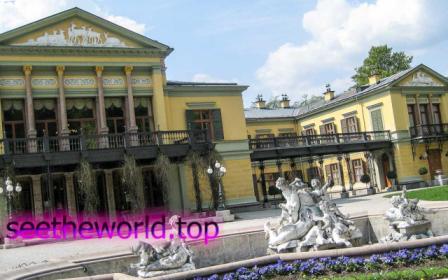
Among other interesting sights of the city, the Marble Castle , Empress Elisabeth ‘s teahouse, St. Nicholas Parish Church , Zauner confectionery and the city’s local history museum stand out , where you can get to know the history of Bad Ischl in detail. The Museum of Technology , dedicated to transport systems and means of transportation of different years, and Villa Legar , which previously served as the residence of the famous operetta composer Franz Legar, are also worth noting. Numerous shops, souvenir shops, boutiques, restaurants and coffee shops are an excellent way for tourists to have fun, buy gifts and souvenirs, and try national cuisine.
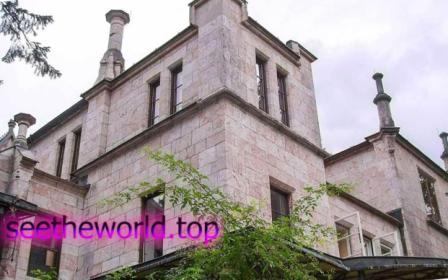
In the vicinity of the resort there are many lakes in which you can swim in the summer, which is done by numerous guests of the city, as well as local residents. To admire the fabulous views of the geographical center of the Salzkammergut region, you need to climb the cable car to the top of Mount Katrin , the height of which reaches one thousand five hundred and forty-two meters. From here, Bad Ischl opens up like in the palm of your hand, and its surrounding mountain peaks, including the Dachstein mountain with its glaciers, appear in a completely new perspective than if you look at them from the lowlands.
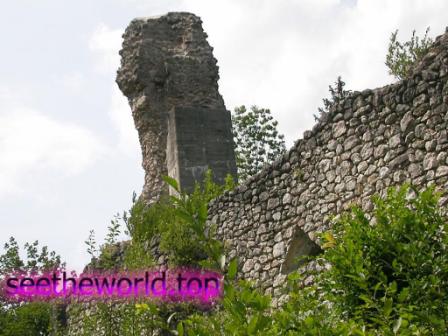
Bad Ischl has a specific subalpine climate. In summer, the average air temperature here is +16 degrees. At the same time, the atmosphere is extremely favorable. There is no heat and at the same time it is warm, dry and comfortable. There is little rain, no wind. In the winter months, the thermometer usually stabilizes around the -7 mark, but this figure is subject to significant fluctuations. Winter usually turns out to be snowy and for lovers of winter sports it is a joyful time. Bad Ischl has many fun and interesting ways to spend your time. In winter and summer, people come here not only to undergo a course of treatment at a local health center, but also to actively relax by participating in various sports, enjoy the picturesque mountain landscapes, get to know the cultural heritage of the city by visiting its museums and attractions. Bad Ischl is well known not only inAustria , but also in the whole world, which is confirmed by the significant tourist excitement prevailing in the resort throughout the year.
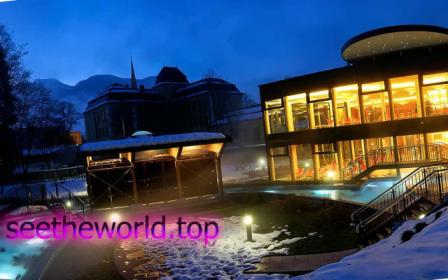
Ski resorts of Upper Austria
The ski resorts of Upper Austria attract thousands of tourists every year. Both professional athletes and beginners can try their hand here. Almost 1,000 kilometers of ski routes located on the slopes of the Alps will appeal to everyone.
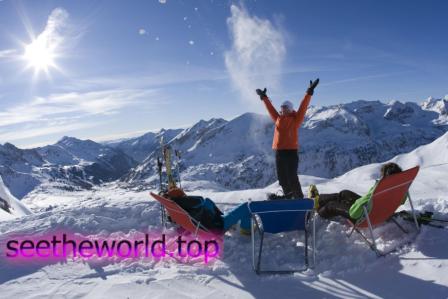
Are you looking for an ideal winter playground, a place to restore strength and relax in a family atmosphere? One of the best ways to enjoy nature’s wonders is to visit Upper Austria ‘s stunning network of cross-country trails . The region will add enthusiasm to your winter vacation, whether it’s walking along beautifully groomed hiking trails or snowshoeing into a wonderland. Is it just a coincidence that Upper Austria is the classic image of winter?
Ski resort Kirchdorf, Upper Austria
The small Austrian village (commune) of Kirchdorf is located at the foot of the Alpine mountains in the federal lands of Upper Austria . It is famous for its ski resorts and unique mountain landscapes. Local hotels in the style of a chalet (chalet translated from French – a hut in the mountains, a country house in the alpine style) fit into the landscape of the mountain range as best as possible.
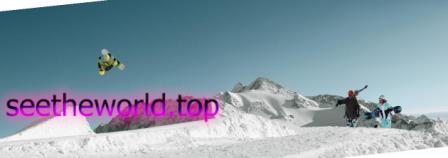
In the harsh climate of the Alpine mountains, these wooden houses, made of massive timber, can always protect against severe frost and bad weather in the mountains. Houses in this style are associated with warmth, coziness and rustic simplicity. A stay in a chalet, in the most prominent places of the village, will make any vacation complete and unforgettable. Mountain views, which can be seen from the hotel window, impress vacationers.
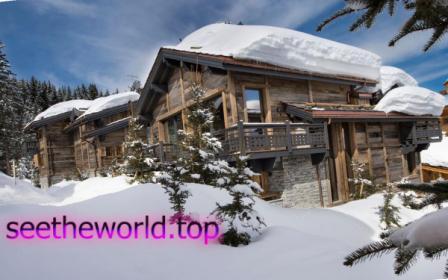
The village of Kirchdorf is primarily known for its convenient and comfortable ski slopes. Thanks to its gentle slopes and smooth cross-country trails that cut through the entire Kirchdorf valley, the ski resort is extremely popular not only with beginners, but also with experienced skiers. The descents stretched for a total of 170 km, which is quite enough for a relaxing vacation.
If the snow cover on the slopes is not enough, thanks to numerous snow cannons, they will become accessible and suitable for normal skiing.
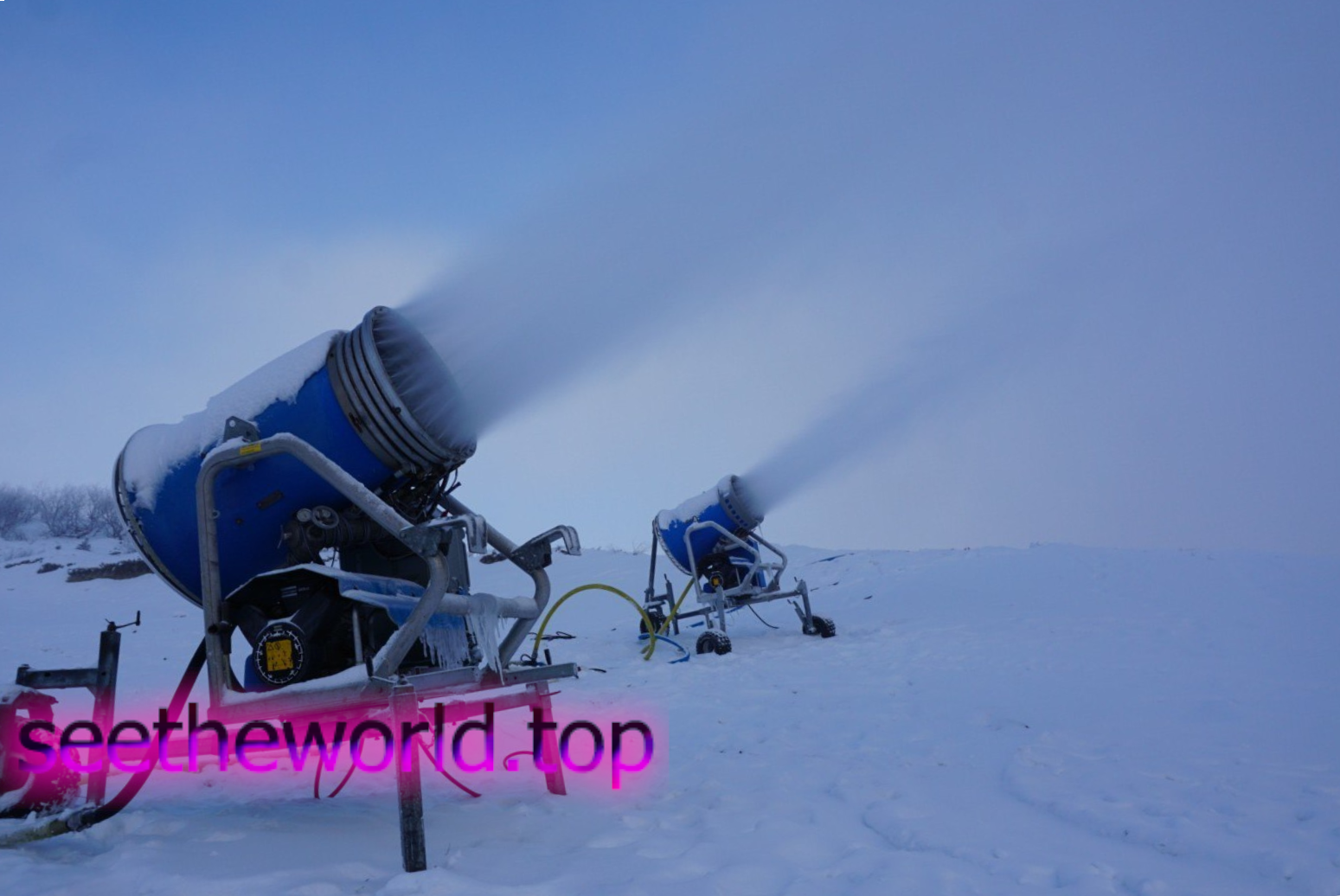
In Kirchdorf there is a convenient and absolutely safe numerous network of lifts. You cannot do without them in this area. With the help of lifts, you can quickly and comfortably reach any resort in the province. Even to ski resorts such as St. Johann and Windring, which have more difficult downhill runs. A trip with the help of lifts will add positive emotions from the landscape you see, in which the mighty mountains and valleys lying below are harmoniously combined. Believe me, the sight is unique. Lifts are also on duty at night. The ski track is completely lit up, and when the lights come on, the sight can take many people’s breath away.

Resting in Kirchdorf with the whole family, even with small children, will not pose any difficulties. Special children’s institutions, where you can leave your little ones under the supervision of educators, will help parents to have a full family vacation. Such a vacation always includes all the health benefits: ecologically clean air and crystal clear mountain water. Local ski school instructors will help teach standing and skiing (even small children). Snowboarding can also be taught here.
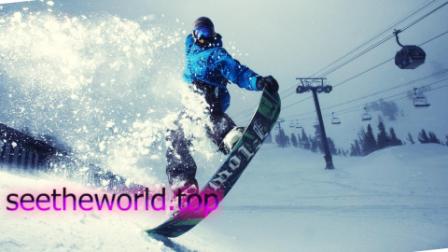
A full range of entertainment, including sleigh rides, local theater evenings, music concerts, and a local craft market. Great bars and nightclubs will also contribute to a complete rest. And a visit to the alpine sauna will overshadow all previous impressions.
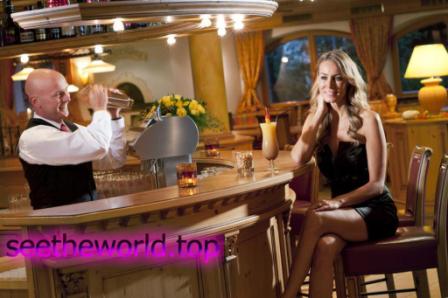
You can also visit other ski resorts from Kirchdorf, of which there are quite a few. And a free trip on a bus that serves tourists will seem like a fairy tale. You can even visit the city of Graz , which is located very close to the village, and see the architectural value of Austria , which is carried by medieval castles.
Upper Austria. Ski resort Zehl
Zehl is a very cozy ski village, picturesquely spread out at the foot of the Hohe Salve on the vast expanse of snow in the largest skiing area of Upper Austria, Wilder Kaiser – Brixental .
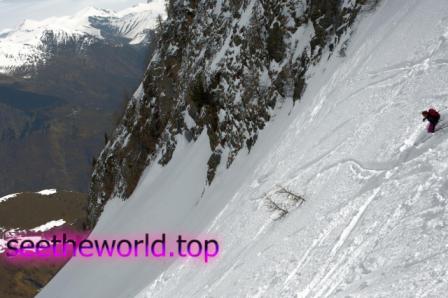
Not far from Zel is a number of resorts connected by a network of modern ski lifts. These are Sheffau , Elmau , Going , Itter . However, it is Zell, thanks to its very good central location in the sun-drenched valley and the most well-developed infrastructure, that is the most attractive place for many tourists not only in this valley, but also in the whole of Tyrol.

Fans of cross-country skiing will find exceptional opportunities here: an excellent 30-kilometer ski run is connected to a 130-kilometer ski run and with the famous m
international ” Kai-zerloipe ” (225 km). There is a large complex with indoor and outdoor pools and heated saunas. There are also great opportunities for other sports: there is a large skating rink, 3 squash halls, a bowling alley, curling, ski touring
m, by paragliding. 40 km of well-maintained hiking trails lead temptingly into the mountains.
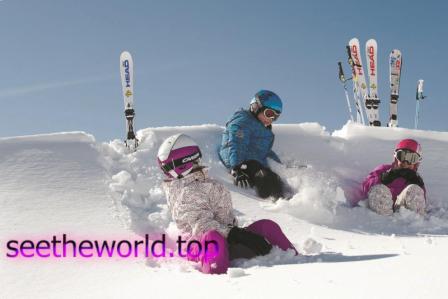
As always, special attention is paid to children: there is a kindergarten (ski and normal), a children’s club, and an amusement park.
St. Anton is an excellent ski resort in Upper Austria
At the resort of St. Anton, not only people who prefer skiing vacations will find something to do. After all, there is an opportunity to make an unforgettable winter ascent to Mount Ren dlyu .
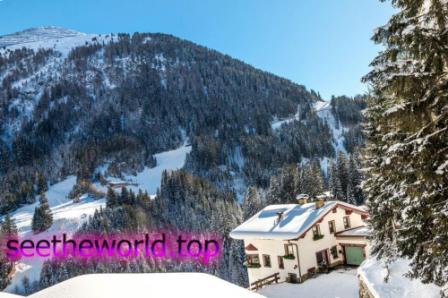
The route starts near the mountain station of the Riffelbbahn 2 lift . The trail passes at a great height – 2645 meters above sea level. Nevertheless, it is completely safe, because there are protective steel cables. If we talk about lifts, then the subscription for them is the only one in this region. Therefore, skiers staying in Sant Antoni can ski in such resorts as Steuben , St. Christoph , Lech and Zurs . The ski tracks of all these resorts in total stretch for five hundred kilometers. A free ski bus (bus) runs between the resorts of Lech and St. Anton. This bus transports skiers from the lifts to the hotels and vice versa. The time of its operation is related to the mode of operation of the lifts themselves.
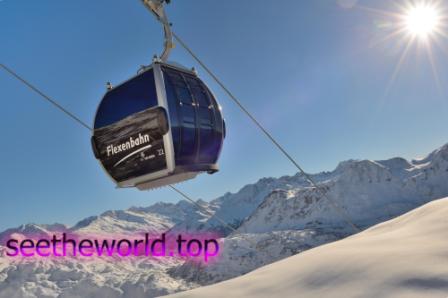
Most likely, before going to the resort, you will want to change your hairstyle (this applies to women). So, you can take care of beautiful and fashionable haircuts on the website. Click on the link and choose. After skiing entertainment in the resort of St. Anton includes 22 cafes, 73 restaurants, 16 pubs and bars, discos, a cinema, a health center and even a casino. Some discos allow you to dance until four in the morning. The “Crazy Kangaroo” institution is very popular among tourists .
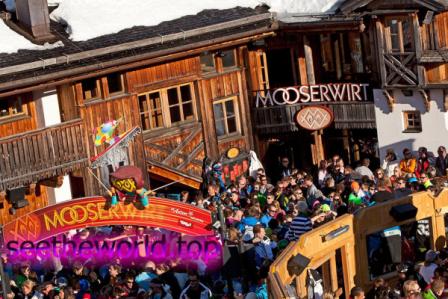
The most riotous guests of the resort are considered to be the English, who, however, are considered phlegmatic and calm throughout the world. It must be said that there are many times more British people in Sant Antoni than in any other resort in the Alps.
Castles of Upper Austria
Ebelsberg Castle
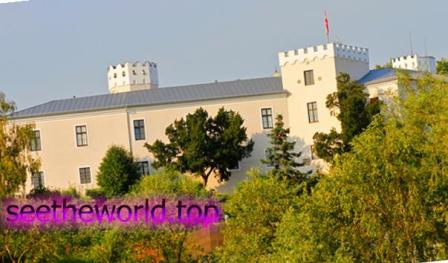
Ebelsberg Castle is a former military facility in Linz , on the territory of Upper Austria . The castle was first mentioned in 1154. For many centuries, the building was an arena of armed clashes. The nearly 900-year-old castle was owned by the bishops of Passau for the first 600 years. In 1542-1546, the castle was reconstructed by Casper Bruchius . After a fire in 1809, the building was put up for sale. Nowadays, the castle is used for big events, Christmas markets and concerts.
The castle has the shape of a trapezoid, has two floors and two internal gates, the way to which is paved by a bridge. The road from the castle leads to the market square and chestnut avenue. The towers of the castle, located at the corners, have many loopholes. The building is surrounded by a double moat and trenches. The architecture of the building belongs to late Gothic. A marble fountain in the shape of a square is located near the castle.
Ebenzweier Castle
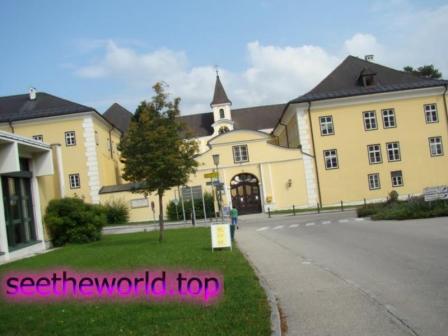
Ebenzweier Castle is located in the city of Gmunden , in the region of Upper Austria .
The castle can be seen for the first time on an engraving by Georg Fischer , which dates back to 1674. Count Christoph von Seedlitz became the first owner of the castle in 1629, but his reign was short. In 1681, the castle passed into the possession of Count Johann Philibert . In 1767, the building was acquired by Baron Elias Wagrain , who bought the building from the bankrupt property of the Philibert family. In 1801, after the death of the baron, the castle again became open for free sale. In 1802, it was acquired by Florian Max Claudy , who generously reconstructed the building. Currently, the building is used as a boarding house.
The castle was rebuilt many times during its history, and its territory expanded significantly. Today, the complex consists of two castle yards. The outer wall of the castle consists of three wings. In the front yard of the castle there are embossed coats of arms made of stone. In the middle of the yard is a fountain, in the middle of which is a column with two forged spouts.
Stone figures of St. Florian are located near the fountain . The central part of the palace houses glazed passages on the upper floor. The three-story facade of the building overlooks the lake and has 75 windows. In the center of the facade is a portico with six columns.
Dornach Castle
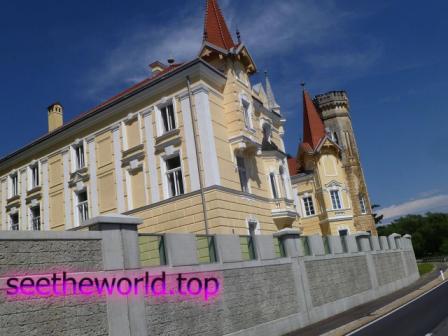
Dornach Castle is located directly on the banks of the Danube, in the city of Saxony , on the territory of Upper Austria .
The building was first mentioned in 1455 in the annals, which mentions the manor that belonged to Frida Strindberg ‘s grandfather . The next owner was Maria Theresia Turn-y-Taxis , who rebuilt it to lock in place. Other owners were the Bragance family , Baron Victor von Offerman , Robert Kohler . In 2003, the building was purchased by the Chausser and Ebenbichler families , who began extensive renovations. Nowadays, numerous art exhibitions and jazz festivals are held in the castle.
The building is made in the neo-baroque style and later enriched with various styles. The tower on the eastern corner is represented by an octagon with teeth. The two parts of the building are connected by an arcade pillar. On the second floor, you can see plaster ceilings made in the Renaissance and Neo-Baroque styles.
Grayllenshtayn Castle
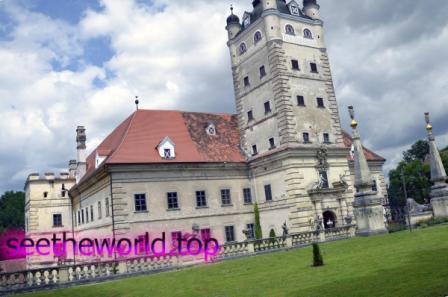
Greilenstein Castle is located on the outskirts of the small Austrian town of Linz . The territory around the castle occupies a park with an area of about 4 hectares.
The castle was built during the Renaissance over 500 years ago. All this time it is in the possession of only one family. During its existence, its design and architecture remained practically unchanged.
The building has 18 rooms with a rather original interior. The registry office, the courtroom, the chapel and the Turkish hall are available for inspection by visitors. Visitors can also look at the library and knight’s hall of the castle.
In the 18th century, a large park complex was built in front of the castle, including balustrades, fountains and sandstone sculptures.
Hueb Castle
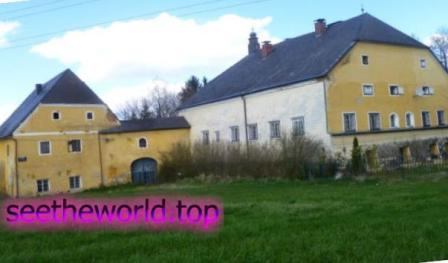
Hueb Castle is located in the fair commune of Mettmach in Upper Austria . The palace was built on the Mettmach hill by Rudolf von Daxberg . The last reconstruction of the castle took place in 1960. Then it was called “updated” or “a wonderful little castle”. Today, the empty building with a park overgrown with bushes and cladding, which has crumbled in some places, looks neglected.
Hueb Castle – three-story, with a tent roof. The structure of the roof has changed significantly – the building was covered by a gable roof until 1721, and the corner turrets also disappeared. Nearby there is a chapel where famous names and dates related to the history of the castle are engraved. The building of the Hueb castle and the adjacent farm buildings are connected by a wall in which there used to be a gate.
Holzheim Castle
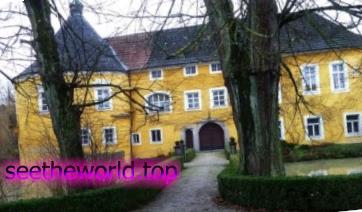 Holzheim Castle, also known as Painherrhof, is located near the city of Linz in the federal state of Upper Austria . The first mentions of it date back to 1075. In 1726, the first building burned down in a fire. Before that, the castle changed three owners. After the fire, a new baroque palace was built. Today, Holzheim Castle has turned into a residential building and requires reconstruction.
Holzheim Castle, also known as Painherrhof, is located near the city of Linz in the federal state of Upper Austria . The first mentions of it date back to 1075. In 1726, the first building burned down in a fire. Before that, the castle changed three owners. After the fire, a new baroque palace was built. Today, Holzheim Castle has turned into a residential building and requires reconstruction.
Holzheim Castle is a three-story building with an eye-catching granite portal bearing the construction date of 1726. Above the entrance, two angels hold an icon of St. Mary with the baby Jesus.
The portal of the arch leads to the courtyard, on one side of which there are arcades resting on massive granite columns. To the left and to the right of the entrance on the main facade are windows topped with beautiful shaped cornices, closed with wrought iron bars.
Valkenshtayn Castle
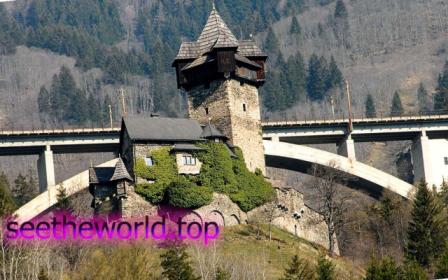
Valkenshtayn is a magnificent old castle located on a hill in the center of the town of the same name. The foundation of the building dates back to the end of the 11th century, when a powerful defensive fortress was built. Since then, the mansion has been rebuilt and changed owners several times before acquiring its modern appearance.
The magnificent palace that has survived to this day was built at the end of the 17th century in the pompous Baroque style. The rectangular one-story building is decorated with elegant towers and whimsical decorative elements, for which it is considered an architectural monument and is under the protection of the state.
There is a picturesque garden with ancient trees on the territory of the castle, and the Catholic Church of St. Margaret is located nearby .
Hagenberg Castle
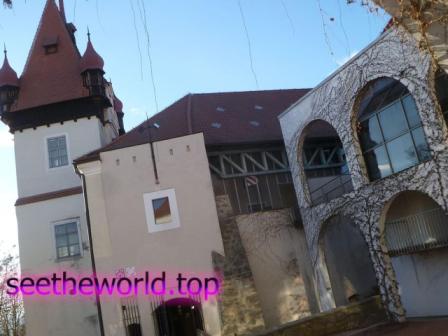
Hagenberg is an ancient fortress located on a high hill in the town of Hagenberg named after Mulkrais . The first mentions of this fortified building date back to the end of the 14th century. By the way, its name can be translated as ” Mount Hagen “.
The medieval castle was repeatedly destroyed and rebuilt, thereby changing its appearance, owners and purpose. In the 80s of the last century, work was started on the restoration of Hagenberg, which at that time was in a neglected state.
Today, the renovated two-story building houses the Faculty of Informatics, Communication and Mass Media of the University of Upper Austria (FH Oberösterreich). On the territory, in addition to the castle, there is a wonderful chapel of the 17th century and a beautiful summer garden.